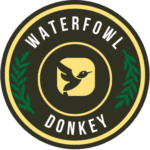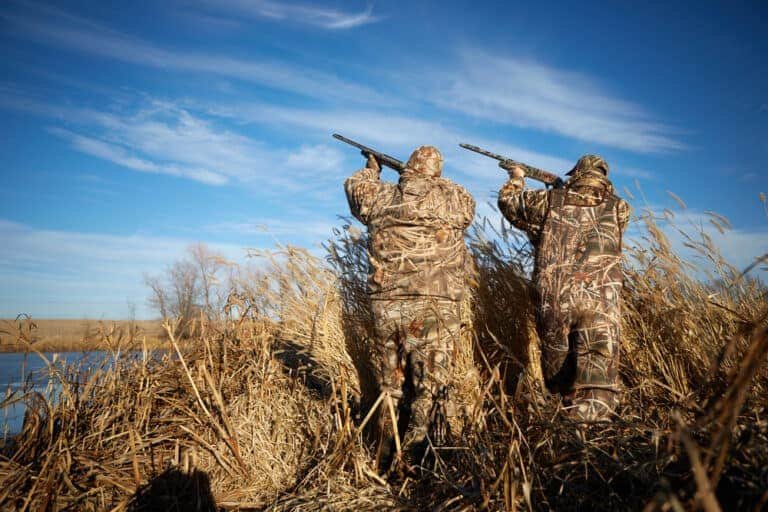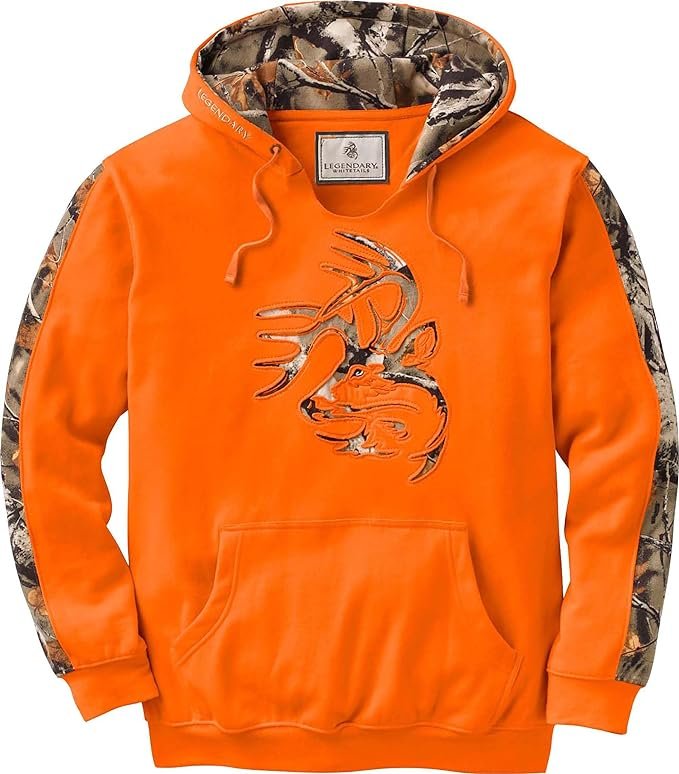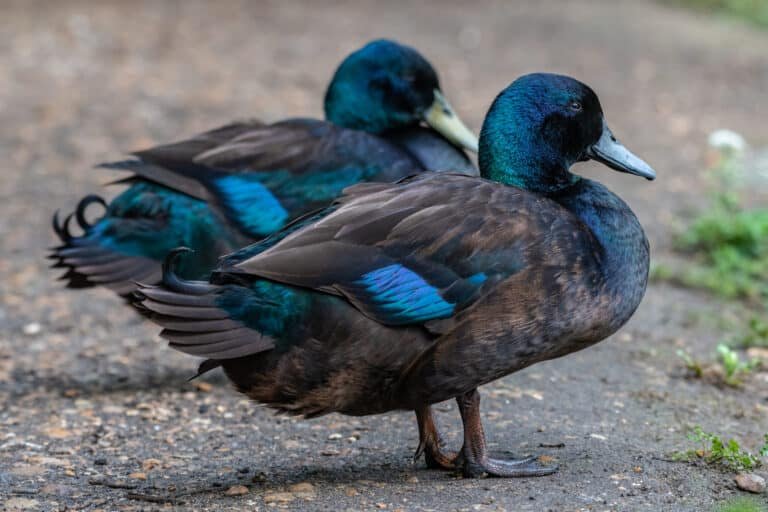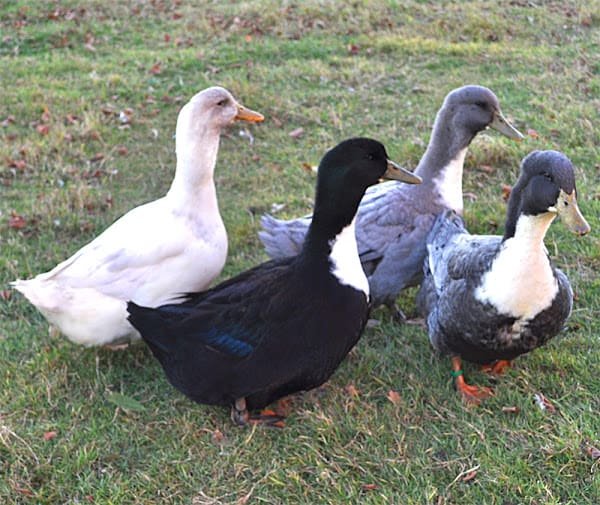Waterfowl Hunting Safety – Why It’s So Important
Waterfowl hunting, an exhilarating outdoor activity many enjoy, involves pursuing ducks, geese, and other waterfowl species in their natural habitats. The art of waterfowl hunting has a rich history that spans centuries and is deeply rooted in our connection to nature and the thrill of the chase. It combines strategy, patience, and skill as hunters seek to mimic waterfowl behavior and outsmart these wary creatures. But before we hit the lands, let’s discuss waterfowl hunting safety.
This popular recreational pursuit has captivated enthusiasts around the globe for generations. From the vast wetlands of North America to European marshlands and African deltas, waterfowl hunting offers a unique blend of adventure, camaraderie, and appreciation for wildlife.
Its reliance on decoys and calling techniques to lure flocks within range sets it apart from other forms of hunting. This dynamic interaction between humans and nature makes waterfowl hunting a truly immersive experience.
Waterfowl Hunting as a Popular Outdoor Activity
Waterfowl hunting has evolved from being primarily subsistence-based to becoming an engaging sporting activity that fosters a deep appreciation for nature’s wonders. It attracts individuals drawn to the challenge presented by these intelligent birds while also providing ample opportunities for wildlife observation and conservation efforts.
The allure lies in the thrill of shooting and observing waterfowl behavior, identifying species with their unique plumage, flight patterns, and calls, and observing their interactions within their natural habitats.
Each hunt presents an opportunity to study these remarkable creatures up close while honing one’s skills as a hunter. Furthermore, waterfowl hunting fosters a strong community among like-minded individuals passionate about this sport.
Whether exchanging stories about successful hunts, discussing innovative methods for improving decoy spreads, or calling techniques, camaraderie is at the heart of this pursuit. It is a chance to forge lasting friendships and create memories that will be cherished for a lifetime.
Waterfowl Hunting Safety – Ensure an Accident-Free Hunt
While waterfowl hunting offers immense enjoyment and excitement, it is crucial to prioritize safety above all else. The inherent risks of handling firearms, navigating waterways, and adapting to unpredictable weather conditions necessitate implementing comprehensive safety measures. First and foremost, adherence to legal requirements and obtaining the necessary licenses is imperative.
Complying with local hunting regulations ensures ethical practices, responsible resource management, and conservation efforts. Equally vital is the need for proper gear and equipment maintenance.
Inspecting firearms, ammunition, boats, blinds or stands, decoys, waders, or other protective clothing before each outing mitigates potential hazards caused by equipment malfunction or failure. Preparation should also include awareness of weather conditions significantly impacting hunting success and personal safety.
Dressing appropriately for the elements ensures comfort during long hours in the field while minimizing the risk of hypothermia or heat-related illnesses. By understanding the significance of safety precautions in waterfowl hunting, hunters can safeguard their well-being and contribute to the ongoing sustainability of this cherished outdoor tradition.
Understanding the Basics of Waterfowl Hunting
Definition and Types of Waterfowl
Waterfowl hunting is a recreational activity that involves pursuing and capturing various species of ducks, geese, and other water-dwelling birds. These birds are collectively known as waterfowl due to their habitat preference for wetlands, marshes, lakes, and rivers.
Waterfowl species commonly hunted include mallards, pintails, teal, Canada geese, snow geese, and many others. Each type of waterfowl possesses unique characteristics in terms of behavior, size, migration patterns, and even preferred habitats.
Understanding the different types of waterfowl is crucial for hunters to identify their targets correctly while ensuring compliance with hunting regulations. Moreover, knowledge about these birds allows hunters to adopt effective strategies for attracting them during hunts.
Studying their physical attributes, like coloration patterns or wing shapes, helps distinguish between different species in the field. Furthermore, understanding their feeding habits and preferred nesting sites can aid in anticipating flight paths or determining suitable decoy placements.
Legal Requirements and Licenses for Hunting Waterfowl
Before engaging in any form of waterfowl hunting activity, it is essential to abide by legal requirements set forth by local authorities. These regulations are designed to conserve wildlife populations while ensuring a sustainable hunting experience for enthusiasts.
Acquiring the appropriate licenses demonstrates a commitment to responsible hunting practices. The specific legal requirements differ from region to region; however, they generally involve obtaining a valid hunting license issued by the relevant wildlife agency or department.
Additionally, most jurisdictions require additional permits for waterfowl hunting due to conservation concerns surrounding these migratory bird populations. These licenses often come with associated fees contributing to conservation efforts by wildlife agencies.
In some cases, hunters may also need to complete mandatory hunter education courses or provide proof of firearm safety training. Familiarizing oneself with these legal requirements ensures adherence to established guidelines and helps promote ethical hunting practices.
Common Equipment Used in Waterfowl Hunting
Successful waterfowl hunting demands specialized equipment to engage with these agile and elusive birds effectively. Understanding the gear commonly employed in this pursuit is essential for hunters aiming to maximize their chances of a fruitful hunt.
1. Firearms: Shotguns are the primary firearms used in waterfowl hunting due to their effectiveness at shorter ranges and ability to deliver a spread of shots. Hunters often select shotguns with barrel lengths optimized for maneuverability in dense vegetation or tight spaces, typically ranging from 26 to 30 inches.
2. Ammunition: Waterfowl hunters typically rely on non-toxic ammunition due to regulations protecting wildlife and environmental health from lead poisoning risks. Steel, bismuth, tungsten-alloy, or other approved non-toxic shot types are commonly used options.
3. Decoys: Decoys imitate the appearance of waterfowl species and are instrumental in luring birds closer for hunting opportunities. These decoys come in various shapes, sizes, and species-specific designs that mimic natural postures or behaviors.
4. Calls: Calls serve as effective tools for attracting waterfowl by mimicking their vocalizations. Duck calls come in different types, such as single-reed, double-reed, or even electronic calls that produce realistic sounds capable of capturing the attention of passing flocks.
5. Camouflage Clothing: Blending into the natural surroundings is crucial for waterfowl hunting since these birds have keen eyesight. Appropriate camouflage clothing helps hunters remain concealed from their targets by matching colors and patterns found within wetland environments.
By equipping themselves with understanding of waterfowl species, adhering to legal requirements, and utilizing appropriate gear, hunters can ensure a safer and more successful waterfowl hunting experience.
Pre-Hunt Safety Preparations
Checking weather conditions before heading out
Before embarking on a waterfowl hunting expedition, it is crucial to check the prevailing weather conditions. Weather plays a significant role in hunting success and safety.
Unfavorable weather can make hunting challenging and potentially hazardous. Checking the forecast allows hunters to plan accordingly, ensuring they are adequately prepared for the conditions they may encounter in the field.
Understanding how weather affects waterfowl behavior is essential. For instance, ducks seek shelter during heavy rain or storms, reducing visibility and making it more difficult for hunters to locate them.
Likewise, strong winds can impact shot accuracy and may necessitate adjustments in shooting angles. By being aware of these factors, hunters can adjust their strategies accordingly and prioritize safety during adverse weather conditions.
Importance of dressing appropriately for the weather
Choosing appropriate clothing is vital when venturing outdoors for a waterfowl hunt. If applicable to your region, the clothing should protect from various elements such as rain, wind, cold temperatures, or scorching heat.
Layering garments allows flexibility in managing body temperature as conditions change throughout the day. Wearing camouflage clothing that blends with the surrounding environment helps conceal hunters from sharp-eyed waterfowl species.
Investing in waterproof gear such as jackets and pants will keep you dry and prevent potential hypothermia if exposed to wet conditions for extended periods. Moreover, selecting appropriate footwear is crucial when navigating different terrains often encountered during waterfowl hunts—opting for comfortable yet sturdy boots with good traction to avoid slips and falls on slippery surfaces like mud or uneven terrain around bodies of water.
Informing others about your hunting plans
Before setting out on any outdoor activity like waterfowl hunting alone or with companions, it is vital to inform a trusted person or family member about your hunting plans. This precautionary measure ensures that someone knows your whereabouts and can alert authorities in an emergency.
Provide details such as your intended hunting location, specific coordinates, the expected return time, and emergency contact information. By sharing this information, you enhance your safety in the event of an unforeseen circumstance, allowing prompt assistance to reach you if needed.
Familiarizing yourself with the area and potential hazards
To ensure a safe waterfowl hunting experience, it is imperative to familiarize yourself with the chosen hunting area and identify any potential hazards or risks associated with it. Conduct thorough research about the location before heading out into the field.
Study terrain maps to understand the topography of the area better. Identify bodies of water, marshes, or other features where waterfowl are likely to congregate.
Moreover, be aware of known hazards, such as submerged objects that could pose a danger when navigating on boats or wading through shallow waters—additionally, scout for safe zones suitable for setting up blinds or decoys.
These areas should provide ample visibility while keeping you concealed from waterfowl and ensuring a safe shooting backdrop without endangering others nearby. By researching and familiarizing yourself with the hunting area’s characteristics and potential risks, you can significantly reduce accidents while maximizing safety and hunt success.
Firearm Safety Tips for Waterfowl Hunting
Proper handling and storage of firearms
When participating in waterfowl hunting, it is crucial to prioritize the proper handling and storage of firearms. Firstly, always ensure that your firearm is unloaded when not in use. This simple but essential precaution reduces the risk of accidental discharge and ensures the safety of yourself and those around you.
Investing in gun locks or safes is also advisable to prevent unauthorized access to your firearms. These secure storage options offer extra protection, especially if children or non-hunters are present in your household.
Safe shooting practices
Maintaining muzzle control is fundamental to firearm safety during waterfowl or other hunting activities. Keep your firearm pointed in a safe direction, typically toward the ground or away from others, when not actively aiming at a target. Remembering this rule even during moments of excitement or heightened action is crucial.
Equally important is being aware of your surroundings before taking a shot. Scan the area thoroughly and make sure there are no fellow hunters, decoys, pets, or other potential hazards within the line of fire before pulling the trigger.
This ensures you avoid unintended accidents caused by misjudging distances or overlooking obstructions in your shooting path. Waterfowl hunters can significantly minimize risks associated with accidental shootings while enjoying their pursuit responsibly by adhering strictly to proper firearm handling and adopting safe shooting practices like maintaining muzzle control and situational awareness.
Boat Safety Guidelines for Waterfowl Hunting
Ensuring boats are in good condition before heading out
Before embarking on a waterfowl hunting excursion, it is crucial to thoroughly inspect your boat to ensure it is in optimal condition. Checking for leaks and properly functioning lights, navigation equipment, and other essential features should be a top priority. Start by examining the hull for any signs of damage or wear that could compromise the boat’s integrity.
Pay careful attention to areas around the transom, keel, and through-hull fittings. Inspect all plugs and seals to guarantee they are secure and watertight.
Next, assess the electrical components of your boat, including running lights and navigation aids. Make sure all bulbs are functioning correctly and replace any that are faulty.
Check the wiring for any visible signs of fraying or damage. It is advisable to keep spare bulbs and fuses readily available if replacements are necessary during your trip.
Conclusion
Prioritizing boat safety guidelines when engaging in waterfowl hunting is not just responsible; it is essential for an enjoyable and accident-free experience. You can mitigate potential risks while on the water by performing pre-hunt checks on your boat’s condition and verifying that all necessary equipment works properly. Remember to always prioritize safety over anything else during your waterfowl hunting adventures.
Adhering to these guidelines will ensure a successful hunt and safeguard yourself and fellow hunters from potential dangers associated with boating activities. Now go forth confidently, knowing you have taken the necessary precautions to make your waterfowl hunting experience as safe as possible!
